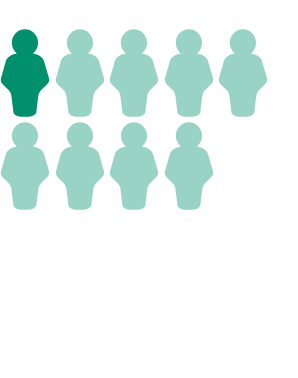Which US cities have the largest homeless populations?
In 2024, New York City's homeless population was nearly twice the size of any other city's.
About 771,480 people were experiencing homelessness in the US in January 2024, according to Department of Housing and Urban Development (HUD) data.
HUD divides the US into 385 continuums of care, groups of service agencies — nonprofits, hospitals, law enforcement, mental health providers, and many more — responsible for coordinating homelessness services in a particular area. A continuum can cover a city, a city and county (e.g., Spokane County in Washington, which includes the city of Spokane), or a group of rural areas. In 2024:
- 48 continuums included major cities
- 61 were largely urban but without a major city
- 165 were largely suburban
- 111 were largely rural
About 54% of the nation’s homeless people lived in the continuums containing the 50 biggest cities.
Which cities had the largest homeless populations in 2024?
Among urban and suburban continuums, the largest homeless populations were in the CoCs containing New York City (140,134) and Los Angeles (71,201), which were also the two most populous cities in the US.
In 2024, seventeen urban or suburban continuums identified at least 5,000 homeless individuals each.
Numbers aside, people experience homelessness differently in each location: 30% of LA’s homeless population was sheltered either in an emergency shelter, transitional housing, or a safe haven program, compared to 97% of New York’s unhoused.
California had the six major-city continuums with the highest proportions of unsheltered homeless people, all with more than 60%: Long Beach, San Jose/Santa Clara, Los Angeles, Oakland/Berkeley, Fresno, and Bakersfield. Boston, New York City, Milwaukee, Baltimore, and Chicago had the highest proportions of sheltered homeless people, each over 90%. Annual homelessness counts occur during January, so cities in colder climates tend to have higher proportions of sheltered people.

How have homelessness counts changed in recent years?
HUD estimates that the number of people experiencing homelessness increased 32% from 2022 to 2024. The 653,104 people who were unhoused in 2023 were the most in any year since point-in-time counts began in 2007; then in 2024, that figure rose another 18%.
The number of unhoused people living in shelters also increased from 2022 to 2024, by 43%. Although fewer people stayed in shelters from 2020 to 2022, likely due to reduced capacity during the pandemic, many of those shelters had returned to full capacity by 2023. In January 2024, 64% of homeless Americans lived in shelters.
Despite these shifts, the list of cities with the highest numbers of homeless people has largely remained consistent with pre-pandemic levels.
How was this data collected?
Communities count sheltered and unsheltered homeless people separately.
Sheltered people are counted based on information from homeless services such as emergency shelters and transitional housing.
Unsheltered numbers are compiled with point-in-time counts: Every January, each continuum conducts a count of unsheltered people. Every locality conducts its point-in-time count differently, but most cities make estimates using counts gathered from a random sample of locations where homeless people congregate.
Learn more about homelessness rates by state, what the federal poverty level is, and get the facts every week by signing up for our newsletter.
Keep exploring
Page sources
Department of Housing and Urban Development
2024 Annual Homeless Assessment Report to Congress
